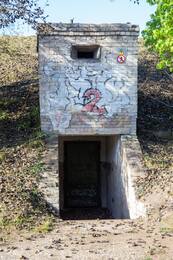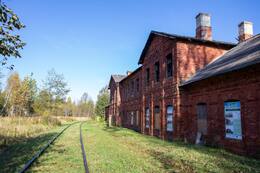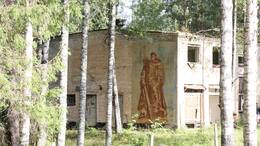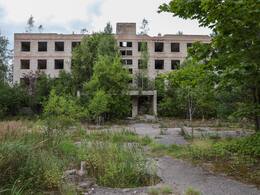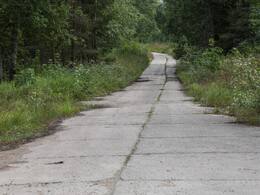Strategic/ballistic missiles
Strategic/ballistic missiles. A ballistic missile is a missile with a ballistic, suborbital flight path designed to deliver a warhead to a specific target. The direction and speed of the missile are determined by the orientation of the missile on the launch pad and the operation of the engine. After the engine is turned off, the missile continues its flight according to the laws of orbital mechanics and ballistics. The first ballistic missile, the A-4, better known as the V-2, was built in Nazi Germany in the 1930s and 1940s and was designed by Wernher von Braun.
An intercontinental ballistic missile (ICBM) is a long-range (more than 5,500 km) ballistic missile. They are usually used as strategic weapons and are designed to deliver nuclear weapons over long distances or to other continents. The first ICBM, the R-7, was launched by the USSR on October 4, 1957. The R-7 was the world's first intercontinental ballistic missile (ICBM), developed by the USSR in the 1950s. In a slightly modified form, it was used to launch the first artificial satellite of the Earth. The R-7 served as the basis for more powerful space launch vehicles, such as the Vostok, Molniya, and Soyuz.
The following countries currently have SKBR in service: the United States, Russia, the United Kingdom, France, and China. SKBR is currently being developed by India, Israel, Pakistan, and North Korea.
More information sources
Strategic/ballistic missiles. Wikipedia. https://lv.wikipedia.org/wiki/Ballistisk%C4%81_ra%C4%B7ete
Intercontinental ballistic missile. Wikipedia. https://lv.wikipedia.org/wiki/Starpkontinent%C4%81l%C4%81_ballistisk%C4%81_ra%C4%B7ete
R-7 (rocket). Wikipedia. https://lv.wikipedia.org/wiki/R-7_(ra%C4%B7ete)
Related timeline
Related objects
Underground Military Bunkers in Valka
The Valka bunkers are located in the centre of the city of Valka, on the left side of Ausekļa street, next to the Ādams Tērauds School. Visitors can only view the bunkers from the outside. The Soviet Army bunkers in Valka were among the most secret places in Soviet Latvia only accessible to people with special permits. From 1953 to 1989, they were home to the Soviet Army’s strategic missile communications reserve. Large 16 wheelers were used to deliver massive reinforced concrete blocks for building the bunkers. Once completed, all three bunkers were covered with gravel for additional reinforcement and insulation. The bunkers housed a strategic missile communications reserve subordinated to the Leningrad Communications Centre. Silos with army missiles were controlled from these bunkers. There were 20 such silos in the Valka and Valga area. In October 1962, during the Cuban Missile Crisis, these missiles were combat-ready and aimed at Florida. Legend has it that they were a couple of hours shy from actually being launched. Right next to the Ādams Tērauds School and the underground bunkers is the Swedish (Sheremetyevo) Fortification. The artificial wall of earth was built at the beginning of the Great Northern War, around 1702, to protect Valka against the Swedes. The steepest wall of the fortification faces the village of Ērģeme, while the other side faces Ausekļa street.
Valka train station
The Valka Railway Station is located at the end of Poruka street, next to a set of train tracks that are out of use. The station building can only be viewed from the outside where information stands of the importance of the railway in Valka and Valga are in place. Near the station building is a memorial stone devoted to the people deported to Siberia on 14 June 1941. The station building was constructed around 1896-1897. Narrow-gauge railway lines in the Valka-Rūjiena-Pärnu section were put in place here initially. During World War I, the railway was severely damaged. After establishing the state border, the Valka Railway Station (Valka II) became a border station. In late September 1920, the special Railway Board Commission arrived in Valka. The commission was authorised to negotiate and conclude an agreement with Estonia on the transfer of passengers from the station of one state to the other. The tracks between the triangularly placed Lugaži, Valka and Valga stations were strategically important, as they allowed armoured trains to turn around and move in the opposite direction. During the Soviet period, the USSR Army used this station to deliver ballistic missiles to Valka. A mass deportation of the Latvian people to the inland areas of the USSR took place on the night of 13-14 June 1941. More than 90 people from Valka and the surrounding areas were put in cattle waggons to be deported from the Valka Railway Station without any court judgement, prior warning or explanations. In September 1944, the station was destroyed by the retreating German Army.
Soviet Army Missile base in Zeltiņi
The former Soviet Army Missile Base is located in Medņukalni, Zeltiņi parish, Alūksne municipality. This nuclear missile base was a particularly secret military facility of the Soviet Army, and it operated in Zeltiņi, Alūksne municipality, from 1961 to 1989. The facility housed P-12 (8K63) and P12Y (8K63Y) surface-to-surface medium-range ballistic missiles with 4 launch pads. Their travel distance was 2,200 kilometres. During this period the army used barbed-wire to secure an area of about 300 ha less than a kilometre from the Sinole-Silakrogs P34 national regional highway. The living and top-secret areas have remained a legacy even today. Concrete roads lead to places hidden from the eye at that time: hangars, launch pads and bomb shelters. Various structures for the maintenance and servicing of nuclear missiles are located on an area of dozens of hectares. Facilities providing the area with the autonomous supply of power, water and heat were destroyed with the withdrawal of the army. After the army left, some of the equipment was handed over to the local municipality. Visitors currently have access to 20 ha of the former territory of the missile base, the south-western part of which is a tourist attraction. Tourists visiting the base can choose between the core exhibit about the history of the missile base, which is located in the Zeltiņi Museum, and a tourist route in the base area. Friends in a group of up to 12 people can enjoy a game of laser tag here.
Former USSR Marcien Army Town or “Gorodok”
Located in Mārcienas, Mārcienas parish, Madona region.
In 1957, the construction of a missile base in Mārcienas began, as well as the construction of a concrete access road and railway to Gaiziņkalns, where a missile launch site was planned (when the USA and Great Britain discovered this plan, construction in Gaiziņkalns was suspended). Several apartment buildings were built in the military town for military personnel from other republics of the USSR.
Currently, the former army base territory is partially abandoned and overgrown with bushes, and part of it is owned by companies or private individuals, which is no longer available for public viewing. The army base is mostly a slum of brick buildings. In the village of Mārcienas - apartment buildings (some are still inhabited), an army officers' hostel (the former Mārcienas elementary school building), an officers' house (Mārcienas culture house) and an army store building.




